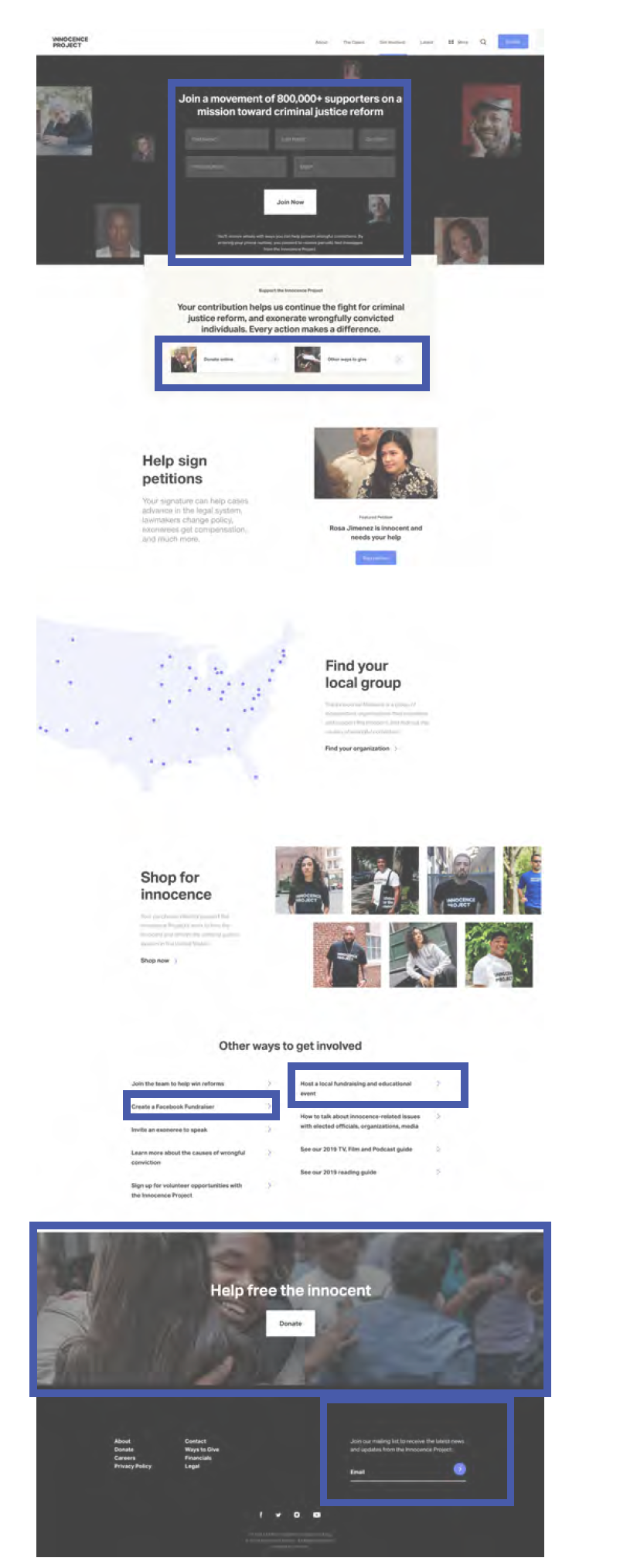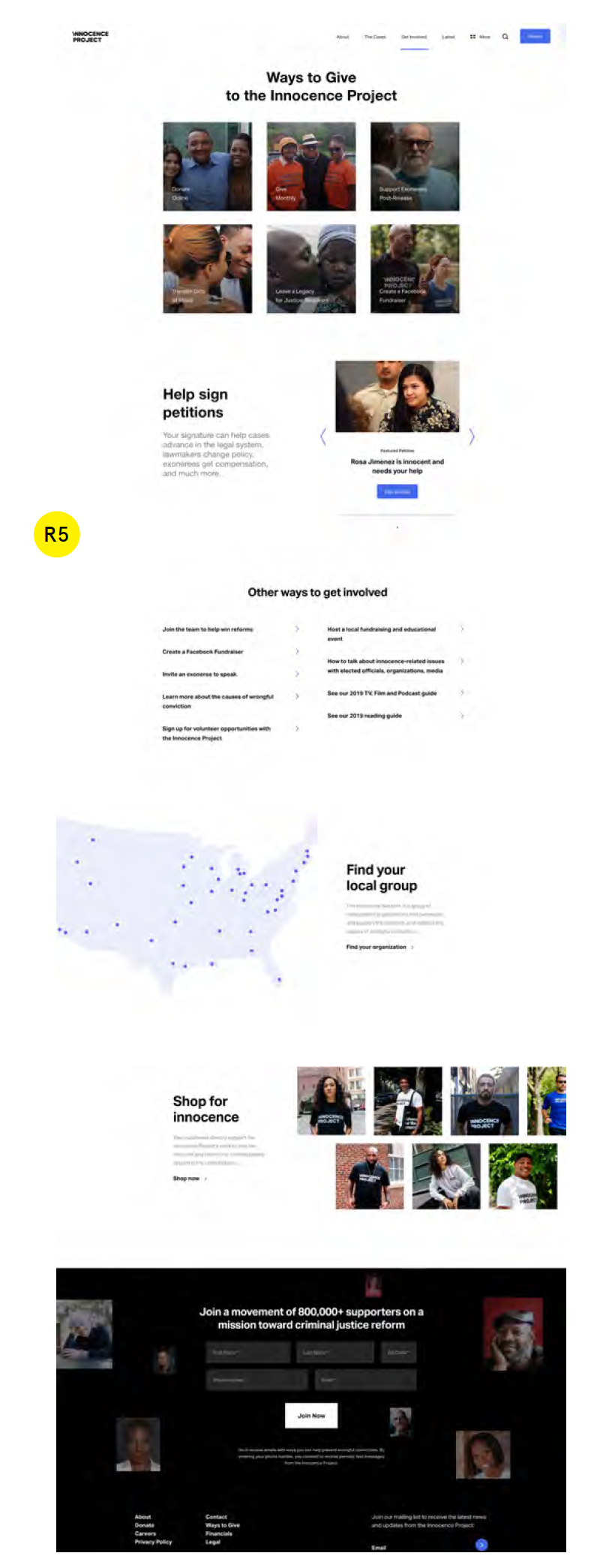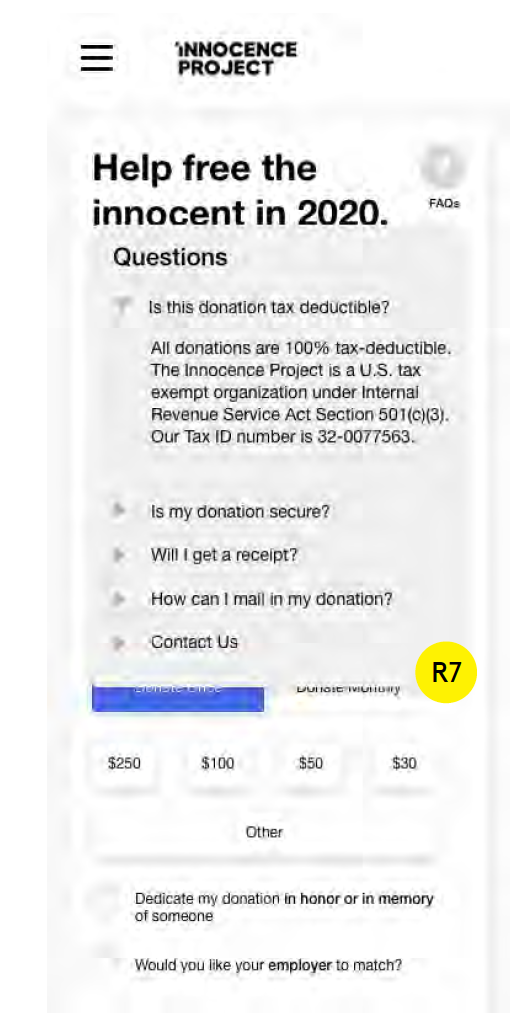The Innocence Project
“The Coffin case stands for the proposition that at the request of a defendant, a court must not only instruct on the prosecution’s burden of proof—that a defendant cannot be convicted unless the government has proven his guilt beyond a reasonable doubt—but also must instruct on the presumption of innocence—by informing the jury that a defendant is presumed innocent. The Court stated,
The principle that there is a presumption of innocence in favor of the accused is the undoubted law, axiomatic and elementary, and its enforcement lies at the foundation of the administration of our criminal law.”
About the Project
The Innocence Project, founded in 1992 by Peter Neufeld and Barry Scheck at Cardozo School of Law, exonerates the wrongly convicted through DNA testing and reforms the criminal justice system to prevent future injustice [1}. This evaluation report describes the results of an unmoderated remote user test of the The Innocence Project website conducted by an interdisciplinary team of five UX Consultants.
Team & Roles
The consultants on the team included three information experience designers, one library and information science specialist, and one data analytics and visualization specialist (me). Together, we conducted a preliminary assessment of the website, developed a potential donor profile and experience scenario, and designed three tasks to test using a third-party online user testing service, UserTesting. While my primary role in this project was managing, analyzing, and visualizing the data we received from the user tests, I was also responsible for the design and layout of the final report. I wanted the report to reflect the history and spirit of the work of the Innocence Project, so I researched the history of the project and highlighted key figures and their stories in the visuals and graphics throughout the report.
Overall Process
Over the course of one week, our team of five experts used a third-party online user testing service to conduct sixteen (16) unmoderated remote user tests of the Innocence Project website. The test users were instructed to approach the site as potential donors and were asked to carry out three tasks: support an exoneree, learn how to host a local fundraising event, and find the address to mail in their donation. The test user videos were analyzed by the team and used to determine three key issues potential donors encounter when navigating the website.
Tested User Demographics
Findings
On the basis of our team’s evaluation of the site and the user tests, we determined that a total of four significant problems exist for potential donors when accessing the Donate and Get Involved pages on both mobile and desktop browsers. These include:
Donation Page (on both desktop and mobile browsers):
The navigation bar/hamburger present throughout the site is absent on this page.
The donation pages of the Innocence Project and Support an Exoneree are similar.
The question section (FAQ) does not exist on the mobile version of the page, making it difficult for users to immediately address issues they may have.
Get Involved (on both desktop and mobile browsers):
The similarity between the Get Involved and Ways to Give pages caused users to be confused when they could not find the donation information they were looking for.
Identified Issues on Pages


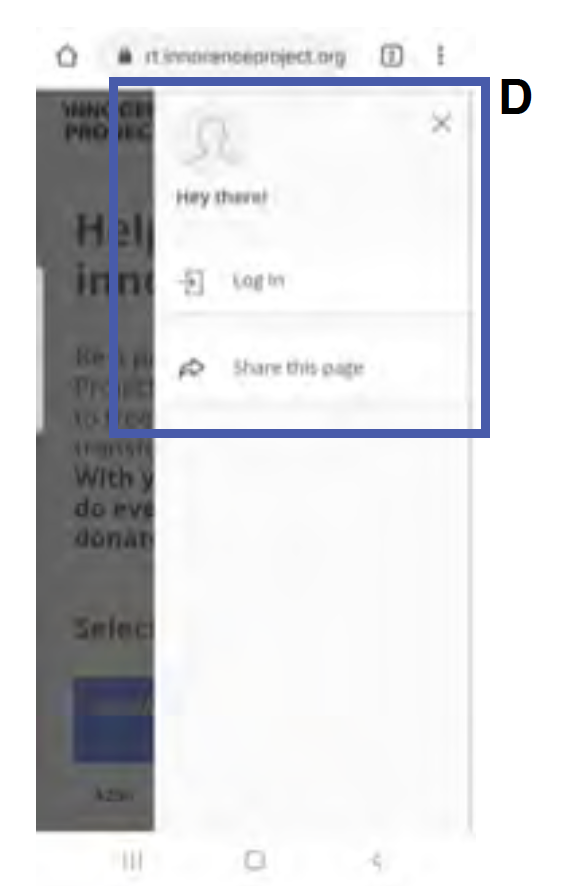
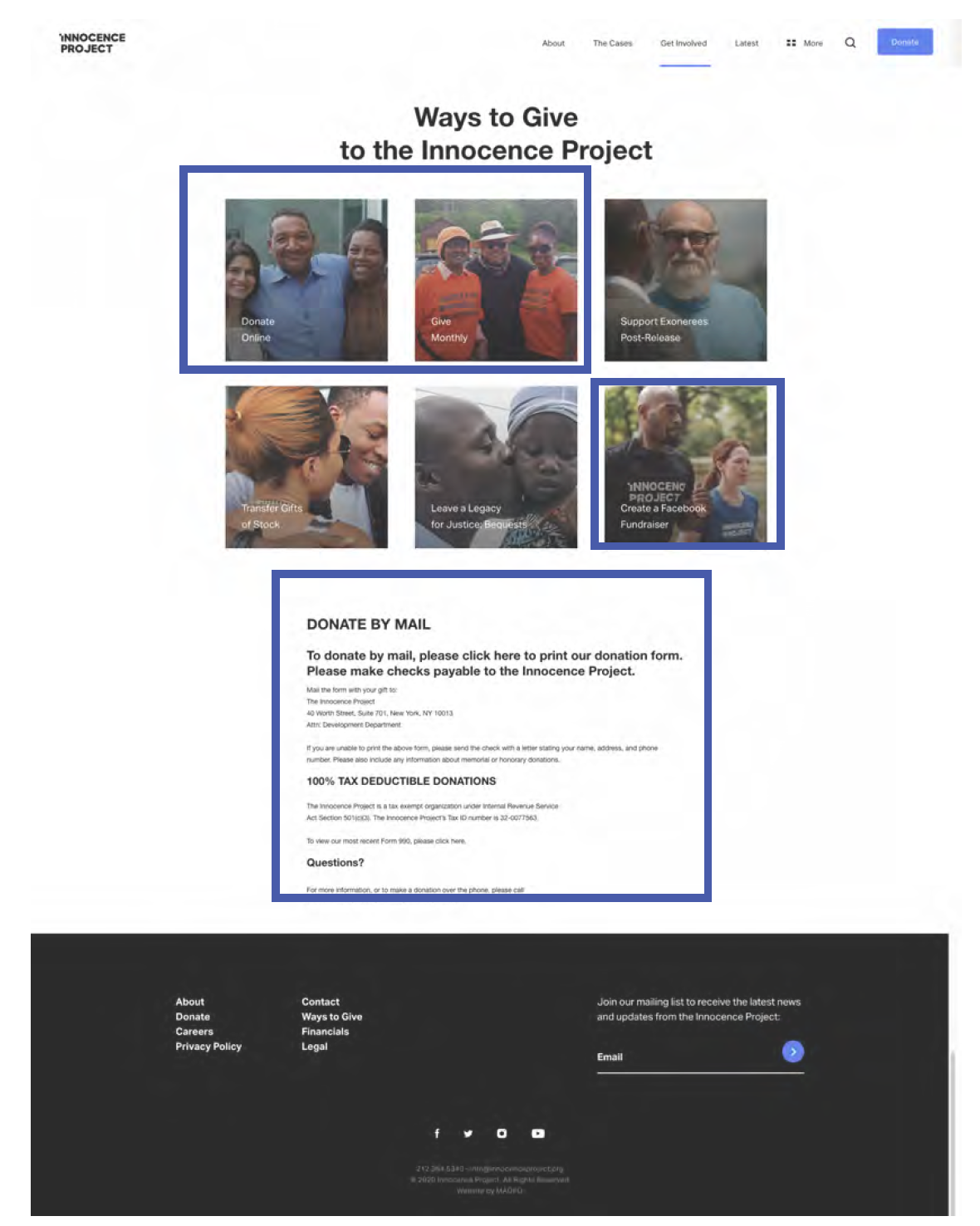
Our Recommendations
We believe that the simplest and most effective way to address the issues on both the Donate and Get Involved pages is down to a matter of condensing information through means of navigation and page layout. On the Donate page, we suggest:
The addition of the familiar navigation bar/hamburger used throughout the site, as it will provide the user with a familiar interface.
Add a feature that allows Support Exonerees to be added as an option to the ‘Select an amount’ section.
Add a Question (FAQ) section in the hamburger drop down menu on the mobile broswer.
On the Get Involved page, we propose that as there are share/overlapping functions on this and the Ways to Give page, that these two pages should be combined. By combining these two pages, we believe the user will feel less confused during the donation process.
Recommendations Highlighted in Yellow Dots
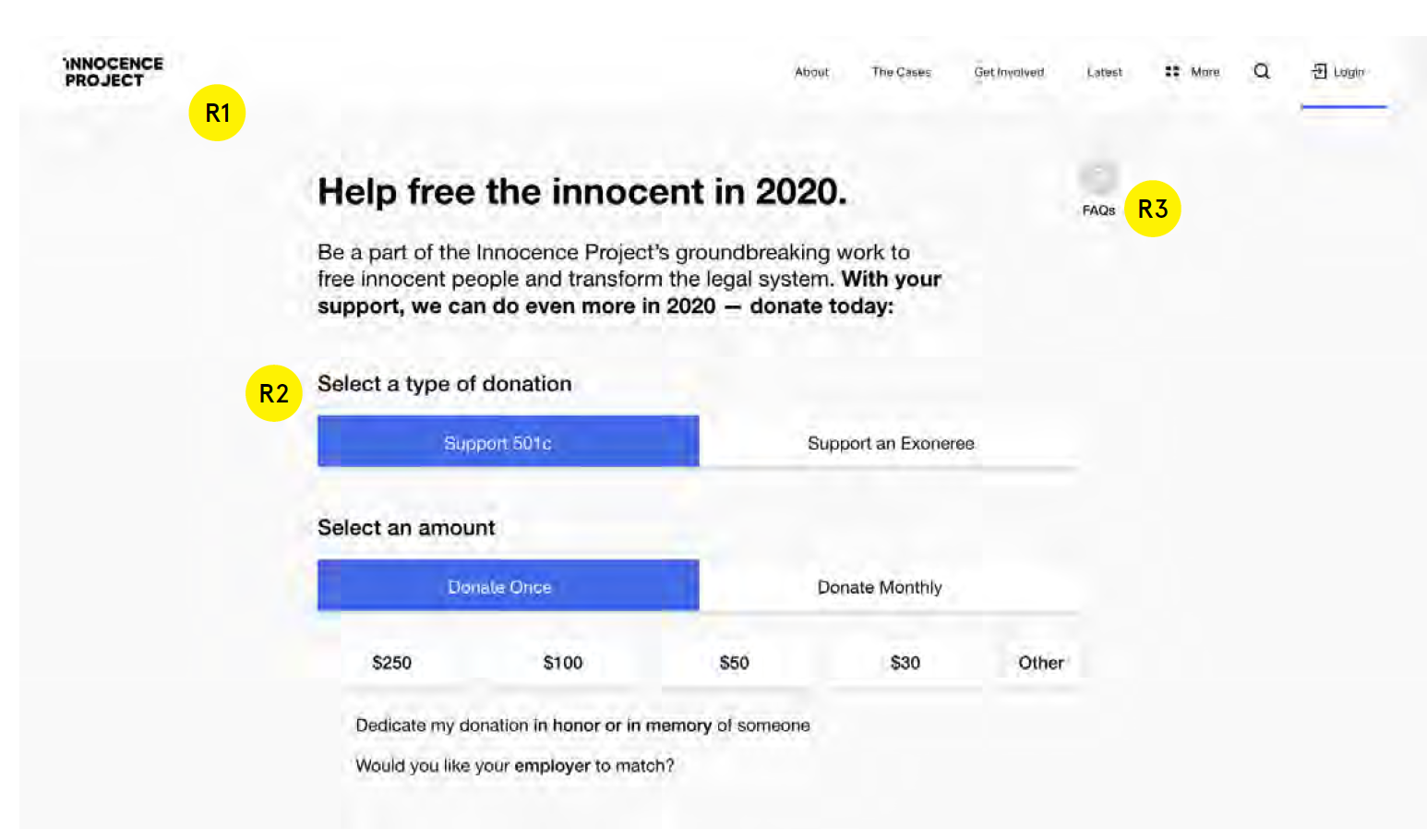
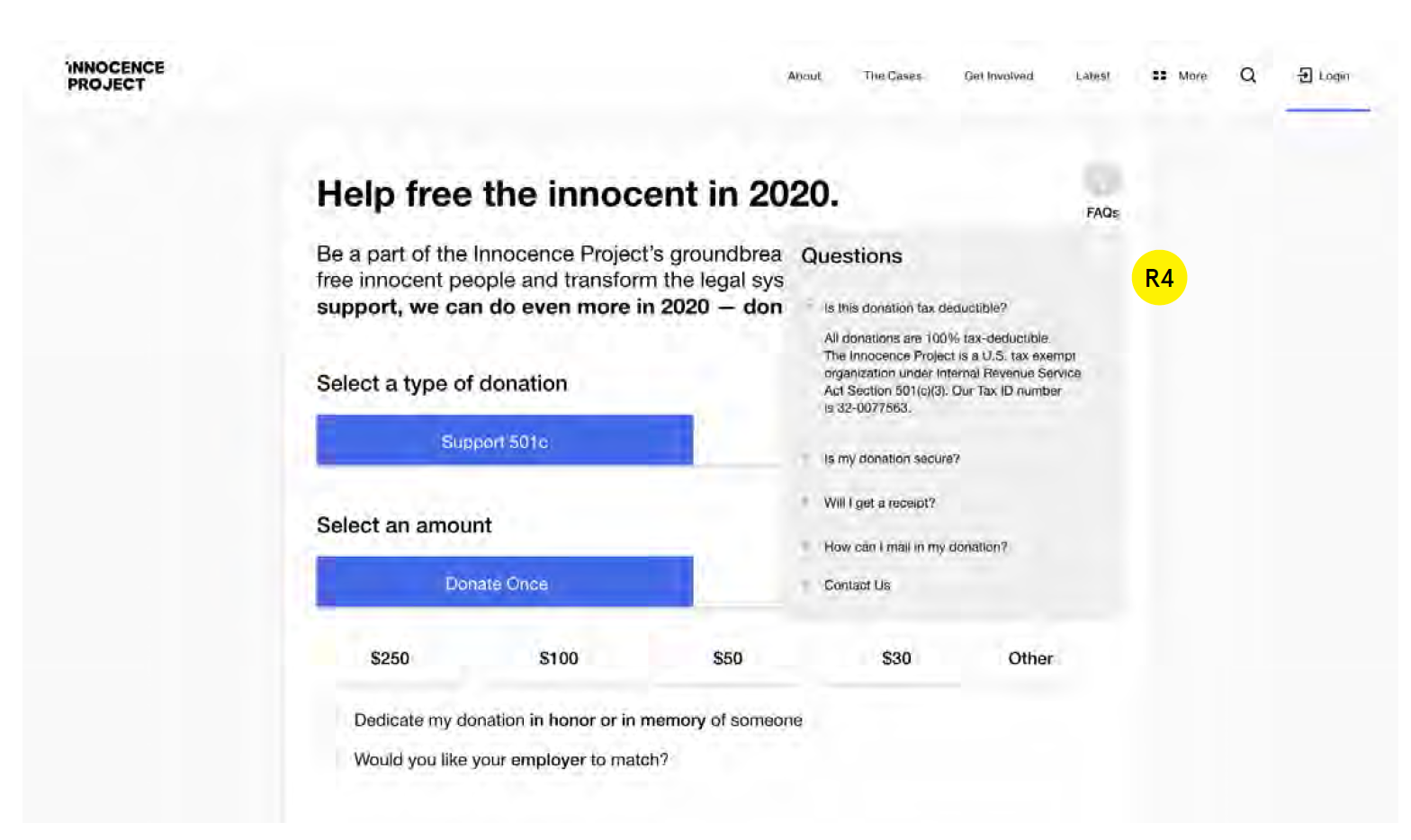
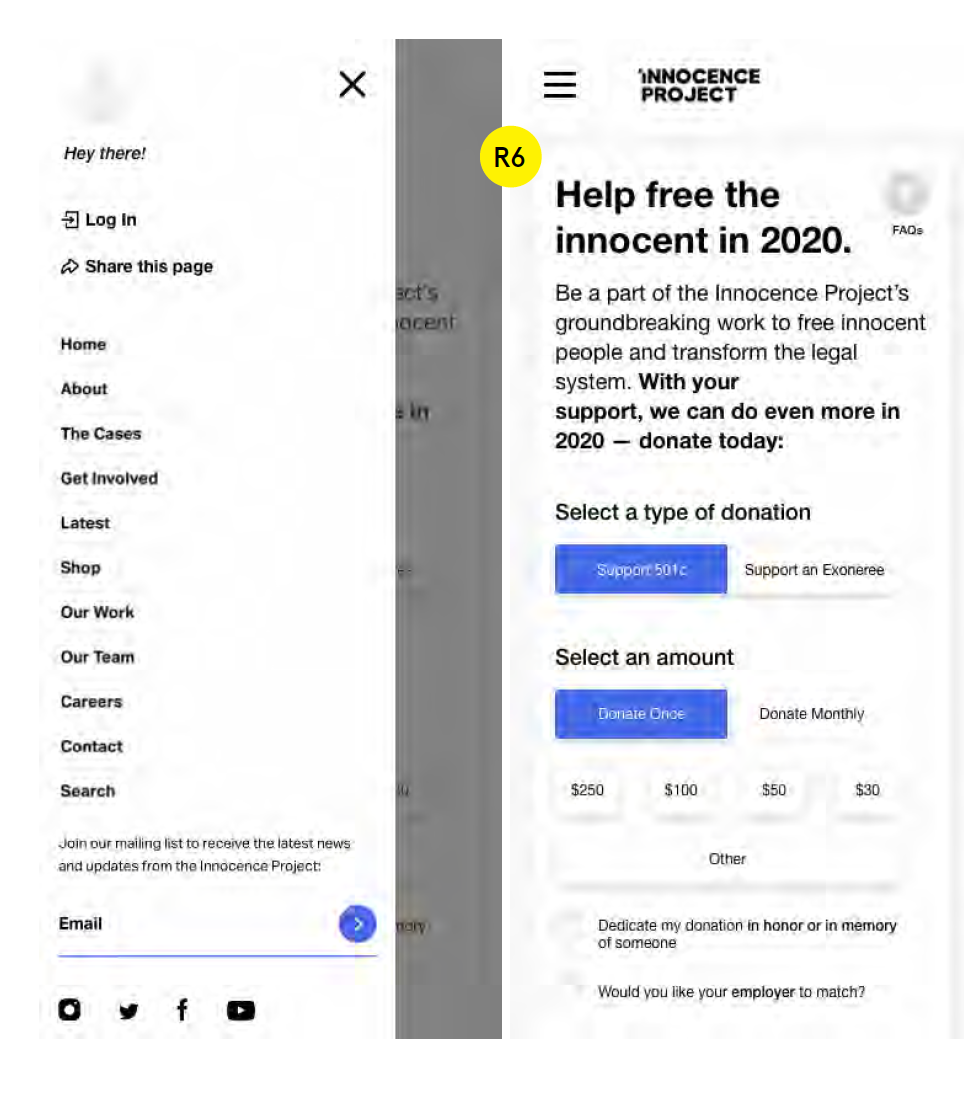
About. (2021). Innocence Project. https://innocenceproject.org/about/


